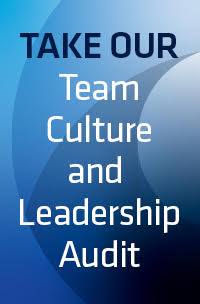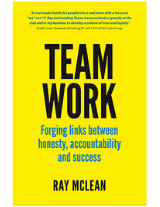As part of Bob Murphy’s recent launch of his book, “Leather Soul” he shared his reflections from his Leading Teams experience early on in his career; a three-year journey of creating an environment where open and honest communications are a link to team and individual success.
A quote from “Leather Soul’ that got me inspired to write this article was when Murphy wrote, “My experience of the program was that it was an education in showing vulnerability as much as anything.”
Later in Murphy’s career, he became the captain of the Western Bulldogs at a time when the club needed resilience and leadership. His leadership and influence over the years were evident at the 2016 AFL Grand Final. The image of Luke Beveridge placing his AFL premiership medal over Murphy’s head on the winner’s podium, captivated me and the sporting world. Whilst receiving the medal, Murphy was clearly emotional (vulnerable to the whole world) and gave us all a reminder of the power of showing vulnerability along with the influence leaders can have if they fully invest in team success. Despite Murphy not playing in the Grand Final, his level of influence and leadership was profound that day and he continues to set great examples of it today.
So, with this in mind, how do we (Leading Teams) help teams and individuals understand the link between vulnerability and high performance?

Investing in relationships
Embarking on a journey towards high performance and results is a worthy aspiration for all leaders and teams? One of the true tests of a team’s functionality is its capacity to create strong enough relationships so that the conversations within the team are genuine with a pure intent to improve.
For those who don’t understand how pivotal relationships are to team performance, investing in relationships as a concept probably seems a bit too simple. Investment into relationships means to learn about, put time into, and show interest in others. We advocate to all our clients and potential clients that their ability to invest in relationships will allow mutual trust and respect to grow and once this happens achieving results tends to follow suit.
When an environment is safe, all team members feel a sense of belonging and empowerment to drive the culture ‘they’ want. In our work with teams, we will use a number of tools to ask members of the team to share stories and experiences that have shaped their leadership and character. What we are really testing is the team’s and the individual’s willingness to be vulnerable. In a recent interview on ‘On the Mark’ Alastair Clarkson (a long-term client of Leading Teams) talked about how building relationships via storytelling and showing vulnerability helps to bring teams closer together. And more often than not, will help bring them home the silverware. He made direct links to not only Hawthorn doing this, but also Richmond and Collingwood.
Agreed behavioural framework
The construction of an agreed behavioural framework is another key component when creating a safe environment that fosters vulnerability; where positional power is irrelevant and non-negotiable behaviours are the keystone to success. Clarity comes from behaviours a team accepts and what they don’t. Once there is clarity, team members can either behave their way into or out of the team.
Modelling behaviour
My dad, Peter, was one of 5 siblings all born within 6 years of each other. He was and still is as hard as they come, a professional boxer who loved his sport but was never afraid to show his vulnerability. The biggest learning for most leaders and the one he taught me, which holds true to this day, is to be a great role model. Role models will lead the way in demanding and upholding the standards the team wants and in building trust and respect with others. My dad continues to be the best role model any son could ever want.
One of the best TED talks on leadership, in my opinion, is from Brené Brown, research professor, story-teller and author. She discusses ‘The Power of Vulnerability’ and says it beautifully:
“Vulnerability is not winning or losing; it’s having the courage to show up and be seen when we have no control over the outcome. Vulnerability is not weakness; it’s our greatest measure of courage”.
Jake joined Leading Teams full-time in 2016 after first working with us as an athlete facilitator from 2000.
Learn more about Jake.



